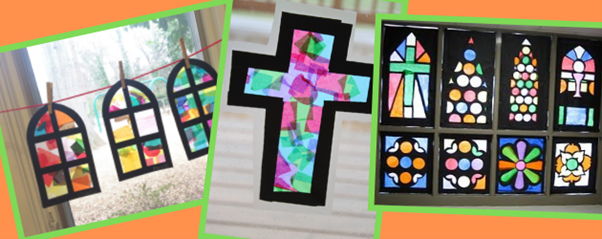This site uses cookies to give you the best shopping experience on our site. By continuing to use this site, you agree to accept these cookies.
Click here to view our cookie information.
St Patrick is the patron saint of Ireland and his saint’s day is celebrated on 17th March, the date he is traditionally thought to have died. St Patrick’s Day is a cultural and religious celebration for Irish people and people of Irish descent across the world. Read on to find out more about St Patrick and for some great St Patrick’s Day activities for your class.
St Patrick is thought to have been born in Roman Britain in the fourth century. His family was wealthy; his father was a deacon and his grandfather a priest in the early Christian church. According to the Declaration, which Patrick is thought to have written himself, he was kidnapped by Irish raiders when he was sixteen years old and taken as a slave to Gaelic Ireland. He spent six years working as a shepherd, and during this period he ‘found God’. God told Patrick to flee to the coast where a ship would be waiting to take him home. Once back in Roman Britain, he became a priest.
St Patrick later returned to Ireland to try to convert the pagan Irish to Christianity. His efforts were later turned into an allegory in which he drove snakes out of Ireland. After his death, in the fifth century, it is claimed that Patrick’s body was taken to Down Patrick in County Down and buried in the grounds of Down Cathedral. St Patrick is regarded as the founder of Christianity in Ireland and was already being revered as the patron saint of Ireland by the seventh century.
The shamrock is a central symbol for Saint Patrick’s Day, but why is it so important? Legend says that St Patrick used the shamrock to illustrate the Christian ideology of the holy trinity. St Patrick taught that, like the shamrock, the holy trinity was made up of three parts; the father, the son and the holy ghost, to create a whole. St Patrick is often depicted holding a cross in one hand and a sprig of shamrocks in the other.
Traditionally, at the end of the St Patrick’s Day celebrations, a shamrock is put into the bottom of a cup, which is then filled with whiskey, beer, or cider. It is then drunk as a toast to St Patrick, Ireland, or those present. The shamrock would either be swallowed with the drink or taken out and tossed over the shoulder for good luck.
Today’s St Patrick’s Day celebrations have been heavily influenced by people of Irish heritage living in other parts of the world, especially North America. In fact, until the late twentieth century, it was often a bigger celebration outside of Ireland than in Ireland itself.
Celebrations often involve parades and festivals, Irish music and dancing and the wearing of green clothes and shamrocks. More effort is also made to use the Irish language, especially in Ireland, where the week of St Patrick’s Day is Irish Language Week.
Christians may also attend church services, and the Lenten restrictions on eating and drinking are lifted for the day. Perhaps because of this, drinking alcohol – particularly Irish whiskey, beer, or cider – has become an integral part of the celebrations.
There are lots of stained-glass windows depicting St Patrick, why not get your pupils to create their own? On an A3 piece of black sugar paper your pupils should draw the outline of their design. They should then cut away the spaces, leaving a black outline of their design with a frame to hold it together. Behind each space they can glue a piece of tissue paper (cut to the correct size) to create a stained-glass effect. Detail can be added with pencil on the tissue paper – but be careful that it doesn’t tear.
St Patrick is often depicted wearing green and holding a cross and a shamrock. Can your pupils add these to their designs? Stick your pictures on a sunny window for a real stained-glass effect.
For younger pupils you could try simpler designs like crosses or shaped windows.

These sparkly shamrock fans will be perfect for waving if you’re going to a local St Patrick’s Day Parade. Ask your pupils to cut out three hearts from thick green card. The hearts should be roughly 12cm tall and 10cm wide. Glue the three hearts together at the point, with the edges slightly overlapping to create the shape of your shamrock leaves. Paint a lollypop stick green and then attach this to the back of your shamrock, about 2cm from the bottom. This will be your shamrock stem and fan handle. Finally, add glue around the edge of your shamrock leaves (about 1cm depth) and add some sparkly green glitter.
For more information and classroom activities for St Patrick’s Day, take a look at the We Are Teachers website.
Did you know that Primary Teaching Services has Seasonal Stickers to help you to celebrate your country’s saint’s day? Check out our Shamrock and Irish Flag Stickers, which can both be customised with your own choice of text. They are perfect for creating special St Patrick’s Day rewards for your pupils. Order by 3pm on Tuesday 12th March and we will dispatch them to you, by first class royal mail post, the following day.